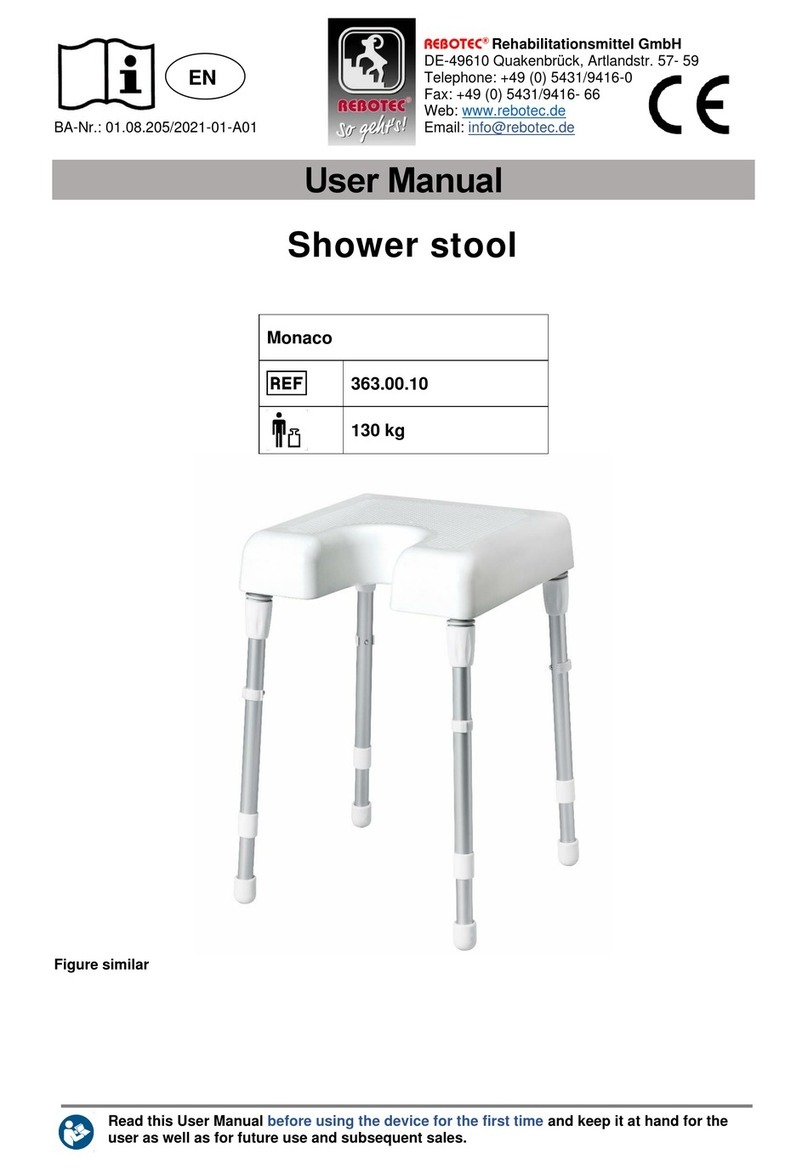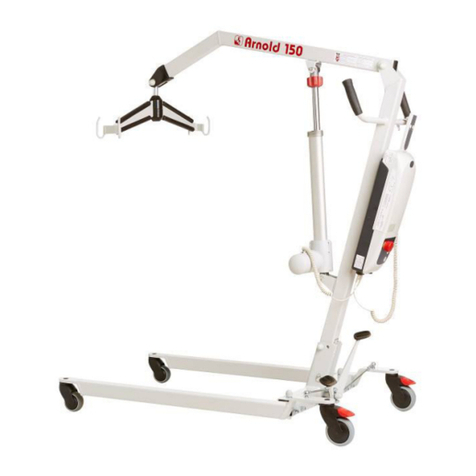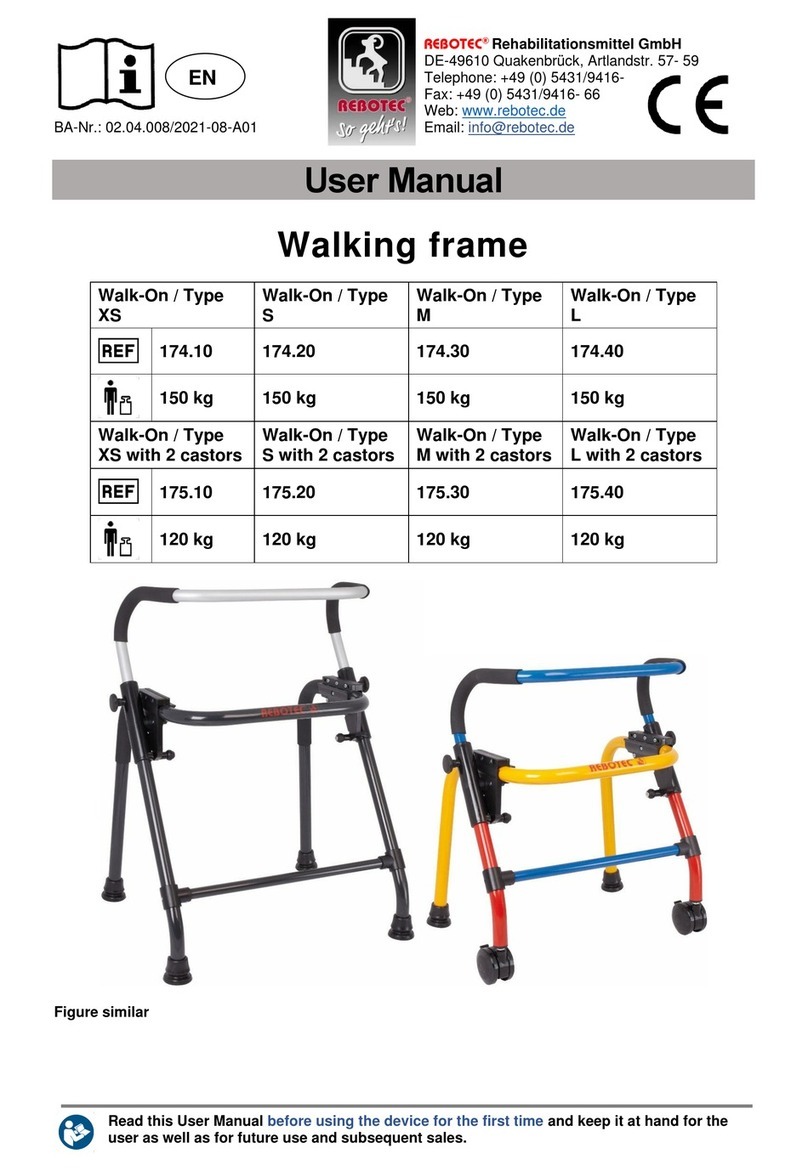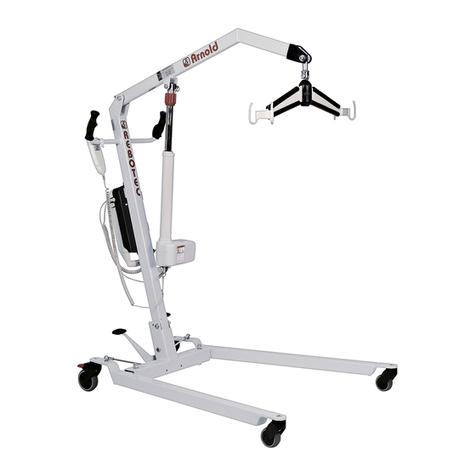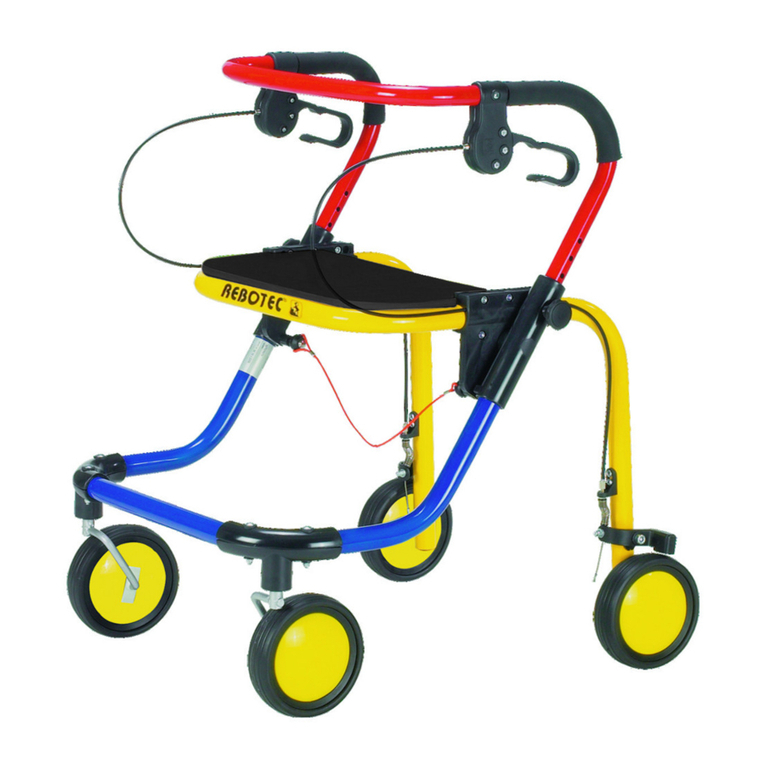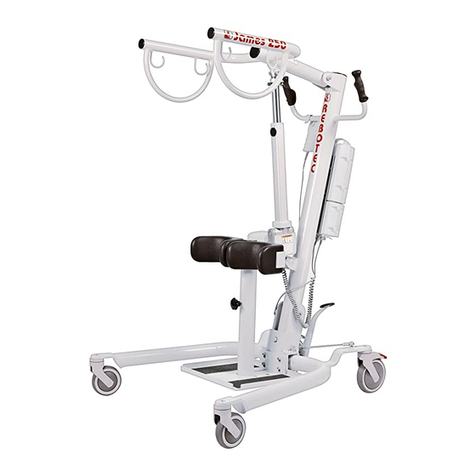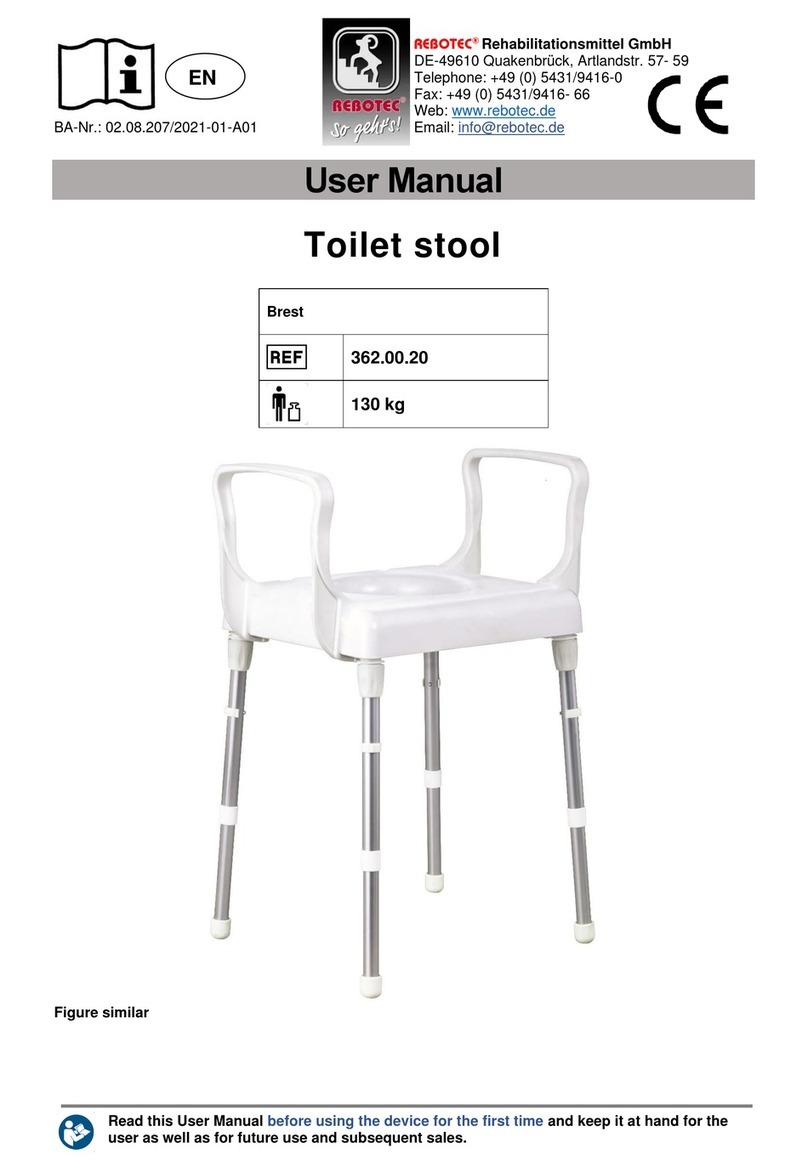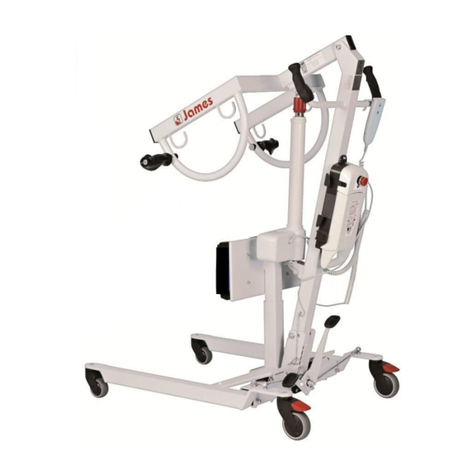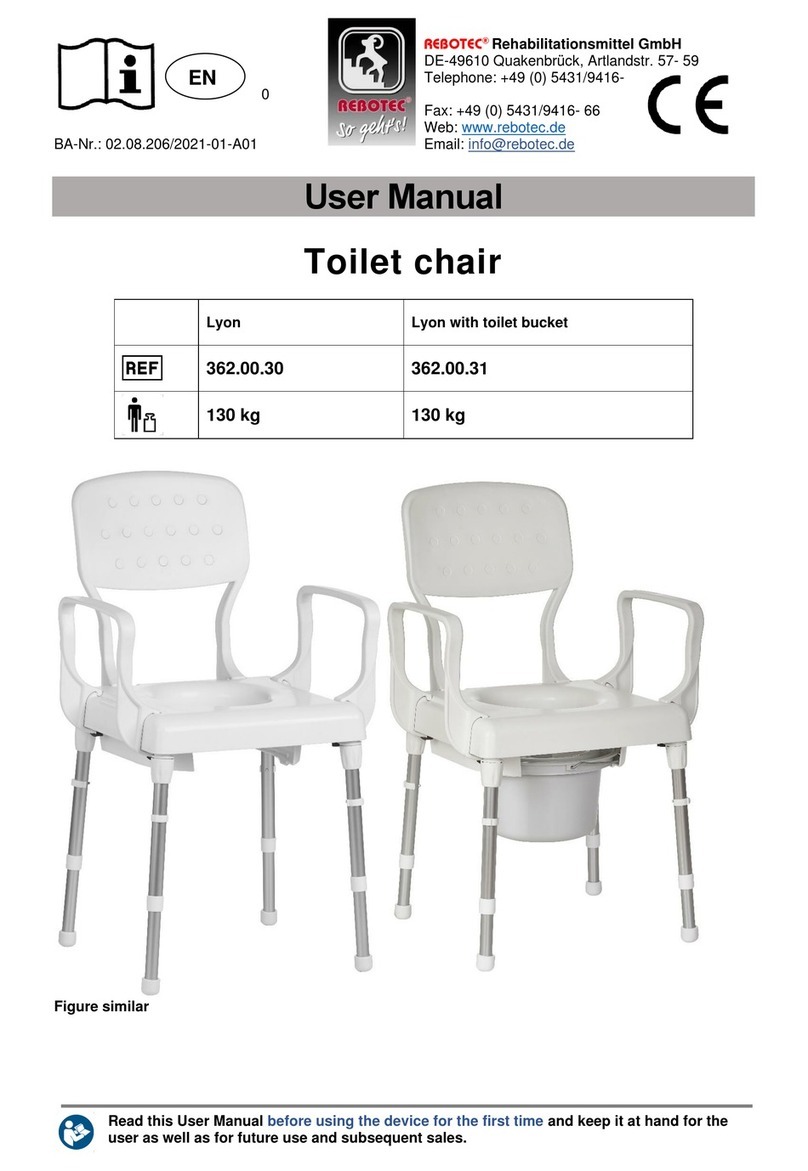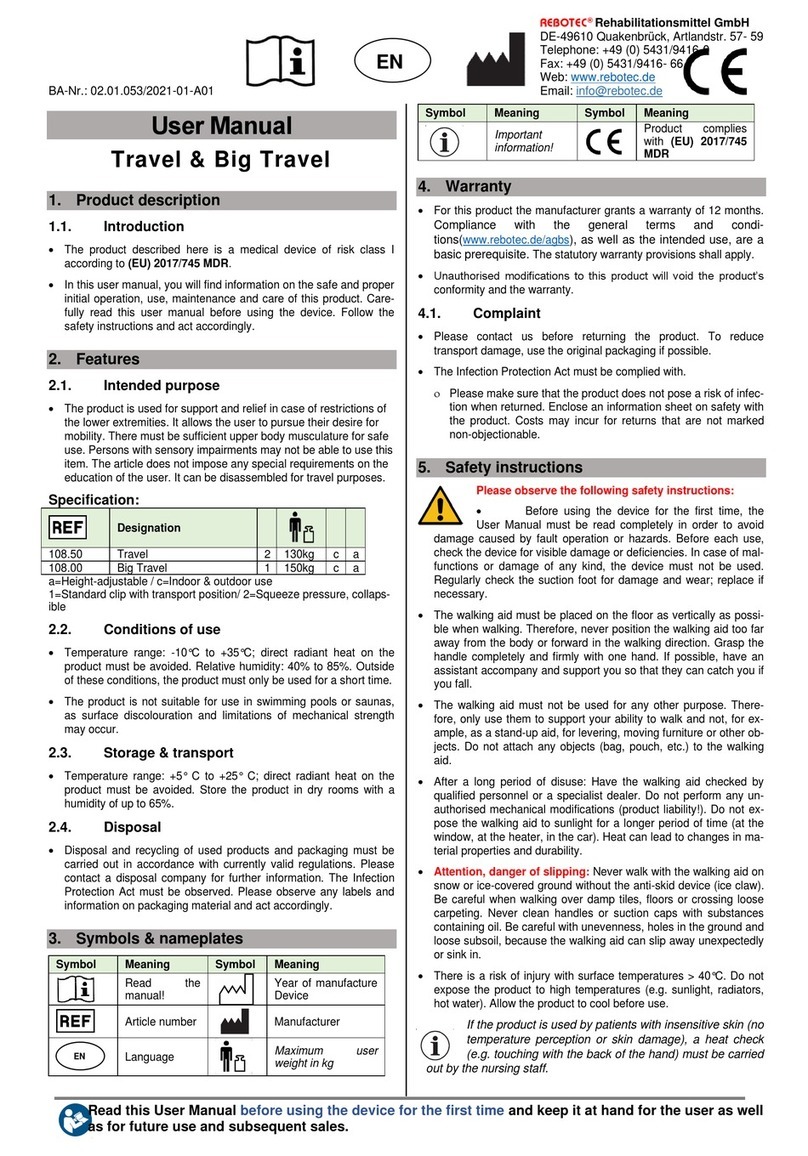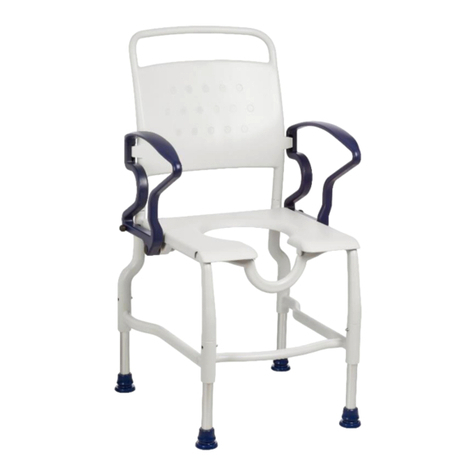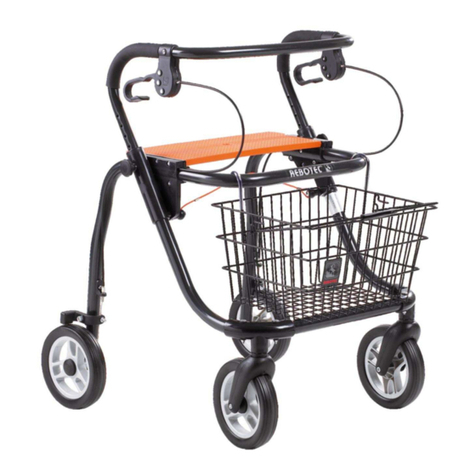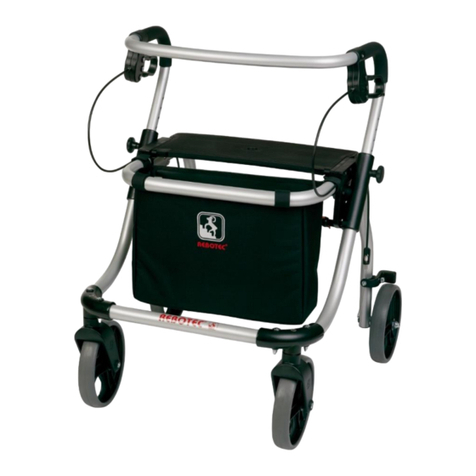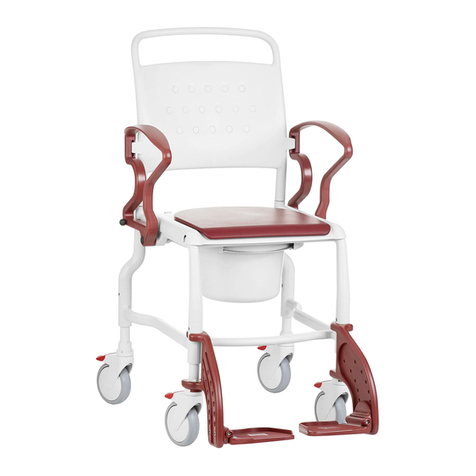Care and Maintenance
All plastic parts may be easily cleaned using a mild commercially available cleanser.
Observe instructions for use.
For the coated aluminium tubing, wiping it with a moist cloth is sufficient in most cases,
and then wipe dry.
The Walking Aid is characterised by its long service life and reliability. In the event it
should fail to function properly, do not attempt to repair it yourself. Contact your local
authorised dealer or care provider. For safety reasons, only original spare parts may be
used. Inadequate or negligent care and maintenance leads to limitations or annulment
of product liability by the Manufacturer.
Allow your Walking Aid to be checked over by specialised dealer.
Reuse
The product is intended for reuse. The reuse (life) depends on the product state. Before
the re-use of the device maintenance must be carried out and the appropriate
instructions to security, care and maintenance must be observed.
This review shall exclude a possible improper use caused by obvious or invisible
damage. Please refer to the Medical Device Directive (MDD) and the regulation for
operator (MPBetreibV).
Life
The expected life of the products listed in this manual when used in accordance with
safety instructions, maintenance intervals and care instructions is 3 years.
Beyond this period, the product can be set used only in a safe condition. Maintenance
should be done at least every six months. Specific requirements of the product, due to
the use of the patient, causing shorter maintenance intervals.
Warranty
The products listed in this manual are provided with a warranty of 24 months. Wear
parts and damages of the products due to improper use are excluded.
Safety Advisories
Be sure the maximum allowable weight for the Walking Aid is not exceeded!
Before each use of the Walking Aid, carefully check it over for damage.
If there is any doubt, then do not use it!
Danger of falling! When sitting, do not bend too far forwards.
Danger of slipping! Be extra careful when using a Walking Aid with rollers on wet
surfaces or loose carpeting or rugs.
Always maintain a stable position when using the Walking Aid.
If the Walking Aid has not been used for an extended time period, then have it
checked over by a specialised dealer before use.
Use the grasp handle only for raising the Walking Aid and as a backrest.
For moving the Walking Aid only use the rubberized handles.
Proper Use / User Advisory
The Walking Aids are designed for persons with limited ability to stand and serve to
increase their ability to walk and are ideal for helping persons to stand up. The
Walking Aids are only suitable for use on solid and even surfaces.
The Walking Aids are especially light and rust-free because of their painted
aluminium frames. Slip-resistant handles provide a secure grip. For transporting, the
Aid is easily foldable.
The handgrip bow is height adjustable. In addition, the Walking Aid can be equipped
with a back rest.
Please allow your specialized dealer or care provider to advise you on
using the Walking Aid and proper adjustment for function.
First-time Use
The Walking Aid is ready to use. When using the Walking Aid for the first time, the
following points must be observed:
Unfolding the Walking Aid
Place the Walking Aid on its rear legs and push the frame apart with the handle bow.
The Walking Aid will click into its end position by itself.
Adjusting the Handle
First remove both star-grip screws. Next choose the appropriate height and set it at
the next screw hole. Put back the star grip screws and tighten them securely.
Fold up the Walking Aid
Pull the stop pins towards each other while lifting the Walking Aid.
The Walking Aid then folds together.
Exchanging the Suction Caps
A worn or damaged suction cap (E) must be replaced. Pull off the suction caps from
the end of the tube. Push on a new suction cap and check to be sure it is firmly
seated. Always exchange the caps in pairs, and not just one, in order to assure
uniform standing stability.
Attention!
Always be sure there is a metal plate inside the
suction cap. It protects the cap from being punctured
by the tube of the frame.
Otherwise damage to the floor surface may result.
There’s also a higher risk of slipping!
